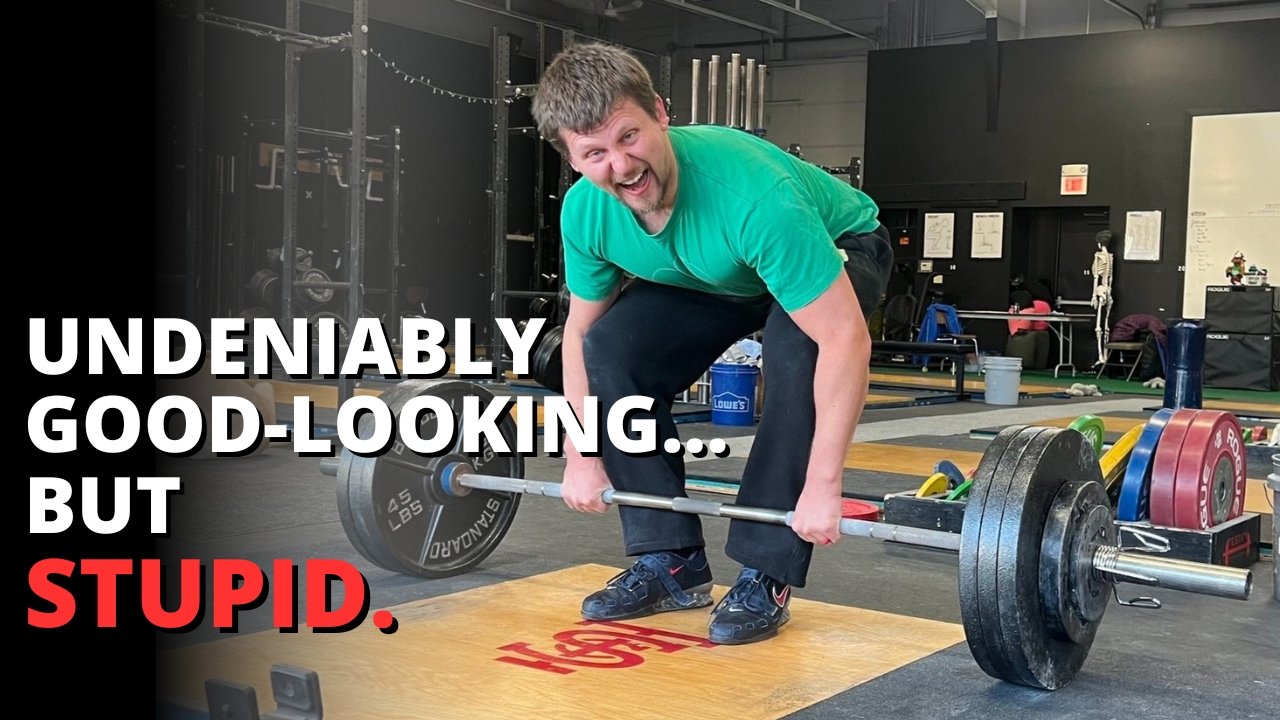The Deadlift: You're Doing This Wrong - Part 4
/This is Part 4 in our series of articles on common deadlift errors and how to fix them. Today’s error is that of raising your chest prematurely or, equivalently, pulling the barbell around your knees.
Good heavens - it’s painful to watch, let alone actually DO.
When the deadlift begins, it is dominated by knee extension, i.e., your knees need to start straightening right off the floor. Now, it’s true that your hip joint starts to open right away as well (i.e., your back angle starts to become more vertical right away), but the start of the movement is dominated by knee extension.
If you start raising your chest too much as you’re pulling the bar off the floor, your knees won’t be contributing as effectively to the start of the movement, and not only this, your knees have actually become an obstacle as you’ve now forced yourself to pull the bar around your knees, thus ruining that nice, vertical bar path you were trying to achieve.
A couple of cues to help with this (and watch the included video to see these cues in action):
Push the floor: Imagine that your body is stuck in place and you are instead pushing the floor down and away from you by straightening your knees.
Pull your kneecaps back or push your kneecaps back: Try to make your kneecaps go backward slightly as you start the movement.
A final note - the goal is not to make your knees lock out right away. After all, your knees shouldn’t finish extending until the top of the deadlift, but they do need to start straightening right away.
As always, we hope this helps you get stronger and live better.
(Some links may be affiliate links. As an Amazon Associate, Testify earns from qualifying purchases.)















